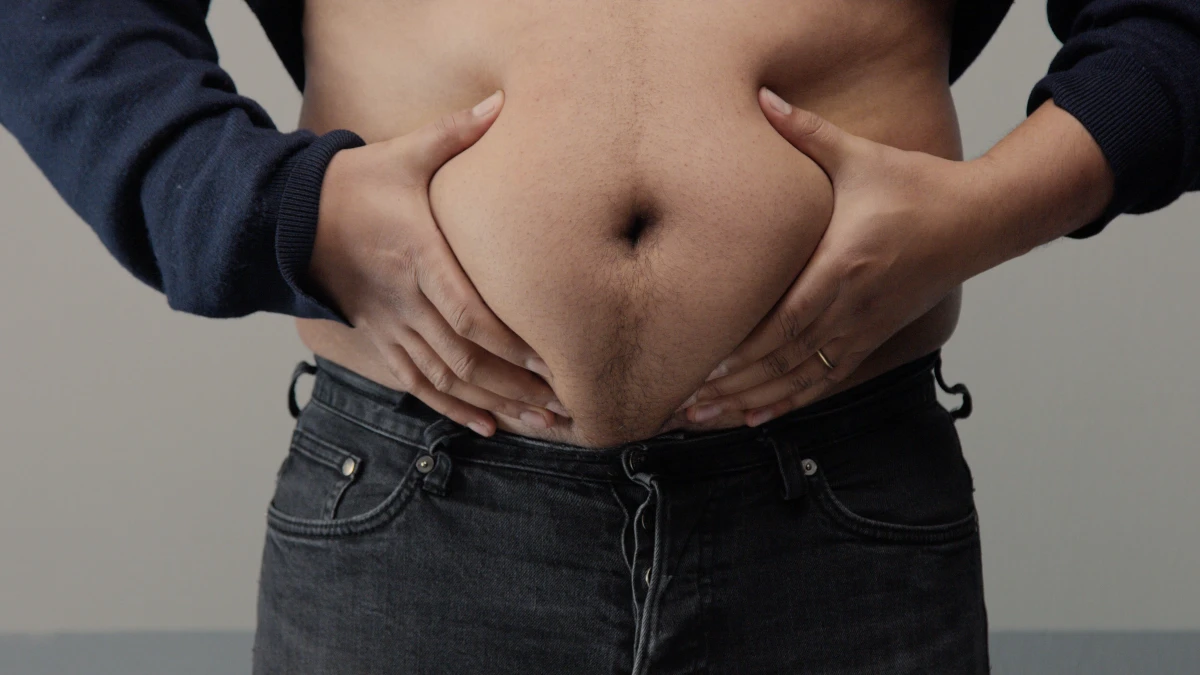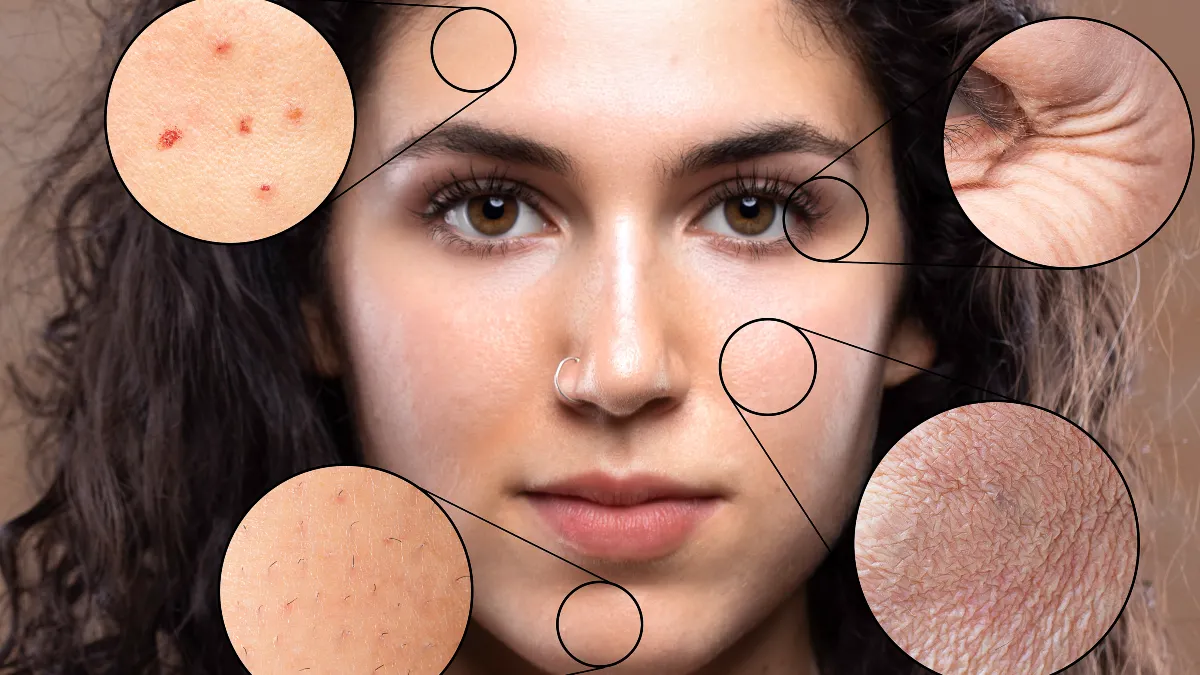That intense energy crash after lunch or the stubborn brain fog you can’t shake isn’t just in your head. It’s a powerful sign of “carb sensitivity.” Many mistake this for a digestive issue, but the real problem is metabolic.
It’s an over-the-top reaction by the hormone insulin, which floods your system after you eat carbs. This hormonal surge leads to wild energy swings, intense cravings, and signals your body to store fat.
Understanding this process is the key to finally taking back control of your energy.
What Does “Carb-Sensitive” Actually Mean?
Carbohydrate Intolerance
A Digestion Problem (Gut Issue)
Lack of Enzymes (e.g., Lactase)
Undigested Sugar travels
Bacteria Ferment (Gas)
Symptoms
⚠️ Bloating, Cramps, Diarrhea
“Carbohydrate sensitivity” isn’t an official medical diagnosis, but it perfectly describes a metabolic state that affects millions. To get it, you first need to know that there are two main ways people have trouble with carbs: one is about digestion, and the other is about your metabolism.
The Two Types of Carbohydrate Problems
1. Carbohydrate Intolerance (A Digestion Problem)
Carbohydrate intolerance is a medical condition where your body can’t properly digest certain carbs. This is a gut issue, usually caused by a lack of specific enzymes in your small intestine.
How it works
A common example is Lactose Intolerance. This happens when you don’t have enough of the lactase enzyme to break down sugar in milk. Another is Fructose Malabsorption, where you lack the transporters to get fructose out of your gut.
What it feels like
The symptoms are mostly in your gut. Undigested sugars travel to your large intestine, where bacteria ferment them. This creates gas, bloating, stomach cramps, and diarrhea. Doctors can diagnose this with a hydrogen breath test, which measures the gas produced by that fermentation.
2. Metabolic “Carb Sensitivity” (An Insulin Problem)
This guide is about the second type: metabolic “carb sensitivity.” This isn’t about a missing digestive enzyme. It’s about your body’s struggle to use carbs for energy after they’ve been broken down into sugar (glucose) and have entered your blood. The problem is an over-the-top reaction from the hormone insulin.
Your pancreas pumps out too much insulin when you eat carbs. This huge hormonal response makes your blood sugar levels swing wildly and tells your body to store energy as fat. This is the beginning of insulin resistance, where your body’s cells start ignoring insulin’s signals.
People often get confused because both issues can cause bloating. If you feel bloated after eating bread, you might think it’s a gluten issue. But that same bloating can be caused by inflammation from a bad insulin response.
This difference is key because the solutions are not the same. A digestive issue might need enzymes or avoiding certain foods. A metabolic issue needs a whole-body approach to fix how your insulin works.
1. The Crash After a Meal

If you feel wiped out an hour or two after eating a meal heavy in carbs like pasta, bread, or sugar, you’re experiencing a classic “food coma.” This isn’t just a feeling of being full; it’s a profound sense of fatigue that makes you want to take a nap.
This happens because these types of foods are digested very quickly, causing a rapid and massive spike in your blood sugar.
This spike is the start of a blood sugar rollercoaster. To deal with the sudden flood of sugar, your pancreas releases a huge wave of the hormone insulin. In a carb-sensitive person, the pancreas overreacts and sends out too much insulin for the job.
This insulin “overshoot” works too well, aggressively pushing sugar out of your blood and into your cells. The result is that your blood sugar plummets, often crashing below where it was before you ate.
2. Constant Brain Fog

Brain fog feels like a cloudiness in your thinking. You might have a hard time concentrating, struggle to remember things, or just feel mentally slow. For many carb-sensitive people, this feeling gets noticeably worse after eating a meal.
It’s a frustrating experience that can make it difficult to be productive and focused throughout the day. This happens because your brain is the most energy-hungry organ in your body, and it runs almost entirely on glucose.
To function at its best, your brain needs a stable and consistent supply of this fuel. The wild peaks and valleys of a blood sugar rollercoaster disrupt this critical fuel line. The high sugar spikes can promote inflammation in the brain.
While the subsequent crashes deprive your brain cells of the energy they need for sharp focus and memory. This energy shortage is what creates the sensation of brain fog.
3. Intense Cravings for Sugar & Carbs

This isn’t just a casual desire for a sweet treat; it’s a powerful, often uncontrollable urge to eat something sugary or starchy. These intense cravings typically strike in the late afternoon or mid-evening, often right as the post-meal energy crash begins.
It can feel like a battle of willpower, but this urge is not a sign of weakness—it’s a direct biological signal from your body.
This craving is a direct result of the blood sugar crash. When your blood sugar drops too low, your brain perceives an energy crisis and triggers a primal survival response.
It signals your adrenal glands to release stress hormones like cortisol and adrenaline. These hormones send an urgent message to your brain: get the fastest possible source of energy to restore balance. Biochemically, the quickest fuel is sugar or rapidly digestible starches.
4. Mood Swings & Getting “Hangry”

“Hanger”—feeling angry or irritable when you’re hungry—is a real experience for many people who are carb-sensitive. You might feel emotionally volatile, anxious, or easily agitated, especially when a meal is delayed or between meals. Small annoyances can feel like major problems, and your mood can shift without warning.
Your mood is deeply connected to your hormones and brain chemicals, both of which are destabilized by erratic blood sugar. First, the production of serotonin, a key chemical for mood stability and feelings of well-being, is influenced by what you eat.
Unstable glucose levels disrupt serotonin regulation. Second, the hormonal response to low blood sugar activates your body’s “fight-or-flight” system. The release of adrenaline and cortisol prepares your body for a perceived threat.
The physical sensations of this state—a racing heart, anxiety, and restlessness—are experienced emotionally as irritability and agitation.
5. Stubborn Belly Fat

A key sign of carb sensitivity is a noticeable accumulation of body fat specifically around your abdomen and waistline. This can happen even if your weight in other areas of your body remains relatively stable.
This isn’t the soft fat you can pinch under your skin; it’s a deeper, more firm type of fat known as visceral fat, which is stored around your internal organs.
This happens because insulin is your body’s primary fat-storage hormone. When you are in a state of insulin resistance, your body is constantly producing too much insulin.
This excess insulin is particularly effective at signaling the fat cells located deep within your abdominal cavity to absorb fatty acids. And glucose from your blood and store them. This process not only leads to weight gain but specifically promotes the storage of this more metabolically dangerous visceral fat.
6. You Can’t Seem to Lose Weight

It can be incredibly frustrating to find that weight loss feels like an “uphill battle,” even when you are carefully managing your calories and exercising regularly. The fat, especially around the midsection, seems resistant to your best efforts.
This isn’t a failure of effort; it’s often a sign that your hormones are working against you.
The role of high insulin goes beyond just promoting fat storage; it actively prevents fat burning. Insulin strongly blocks the process of lipolysis, which is the breakdown and release of stored fat from your cells to be used for energy. When your insulin levels are chronically high, it’s like a lock on the doors of your fat cells.
The hormonal signal to burn your stored fat is blocked. This creates a state of metabolic gridlock that makes weight loss physiologically challenging, no matter how hard you try.
7. Skin Changes: Skin Tags & Dark Patches

You may notice the appearance of multiple small, benign skin growths known as skin tags. Typically in areas with skin folds like the neck, armpits, or groin. At the same time, you might see the development of dark, thick, velvety-textured patches of skin in these same areas.
This condition is called acanthosis nigricans. These skin changes are a direct external sign of an internal hormonal imbalance, specifically chronically high insulin. Excess insulin in your bloodstream can activate growth factor receptors on the surface of your skin cells.
This activation acts as a potent growth signal, causing these cells to multiply abnormally. This rapid cell growth leads to the formation of skin tags and the dark, thick skin characteristic of acanthosis nigricans.
They are visible markers of underlying insulin resistance and can appear long before a blood test shows a problem.
8. Feeling Puffy or Inflamed

This is a persistent, low-grade feeling of being puffy, bloated, or swollen that doesn’t seem to go away. It’s not necessarily a dramatic change, but a constant sense of inflammation that can sometimes be accompanied by achy joints or a general feeling of being unwell.
This happens because diets high in refined carbohydrates and sugars are known to be pro-inflammatory. The frequent, sharp spikes in blood glucose and the resulting high insulin levels can trigger systemic inflammatory pathways throughout your body.
This increases levels of inflammatory chemicals and oxidative stress. This chronic, low-level inflammation can manifest as fluid retention and puffiness., Contributing to that generalized feeling of being unwell.
9. Feeling Hungry Soon After a Big Meal

It’s a confusing experience you’ve just eaten a meal that was large enough to make your stomach feel physically full. Yet just one or two hours later, you’re experiencing strong feelings of hunger again. This can make you feel like you have no control over your appetite.
True satiety, or the feeling of being full and satisfied, is governed by your cellular energy status, not just the physical stretching of your stomach. A high-carbohydrate meal, especially one low in fiber, protein, and fat, is digested and absorbed very quickly.
This leads to the rapid spike-and-crash cycle. Although your stomach was filled, your body’s cells are quickly in an energy deficit once your blood sugar plummets. This triggers the release of hunger hormones like ghrelin, signaling your brain to seek more food long before it should be necessary.
10. Bad Sleep

Poor sleep can show up in several ways you might have difficulty falling asleep. Find yourself waking up frequently throughout the night, or wake up in the morning feeling tired and unrefreshed.
Your body’s need for stable blood sugar continues through the night. A dip in blood sugar during sleep (nocturnal hypoglycemia) can trigger an emergency release of cortisol and adrenaline. These stress hormones are designed to raise your blood sugar, but they also have an alerting effect that can jolt you awake.
Conversely, going to bed with high blood sugar (hyperglycemia) can lead to restlessness, dehydration, and frequent urination, which breaks up your sleep. This creates a vicious cycle, as even one night of poor sleep has been shown to significantly worsen insulin resistance the following day. Making the problem even harder to solve.
11. Bloating & Gas After Eating Carbs

You may experience digestive discomfort, a distended abdomen, and excessive gas that seems specifically linked to meals high in bread, pasta, or other grains. This can be uncomfortable and might make you think you have a specific food intolerance.
While these symptoms are similar to those from a digestive issue like lactose intolerance, the root cause can be metabolic. Insulin resistance has been associated with negative changes in the composition of your gut microbiome.
Furthermore, conditions like Small Intestinal Bacterial Overgrowth (SIBO), where bacteria grow in the wrong part of your gut, can be linked to metabolic issues. In this environment.
Poorly metabolized carbohydrates are easily fermented by these bacteria, leading to the production of gas, which causes bloating and discomfort.
12. Being Thirsty and Urinating a Lot

A classic sign of high blood sugar is a persistent feeling of thirst that is difficult to quench. Coupled with a need to urinate more frequently than usual, particularly at night. This can be disruptive and is a clear signal from your body that something is wrong.
These are physiological responses to having too much sugar in your blood (hyperglycemia). Your kidneys work hard to filter your blood and reabsorb all the glucose.
When glucose levels become chronically elevated, they exceed the kidneys’ capacity to handle it all. The excess glucose is then “spilled” into your urine. Through a process called osmosis, this sugar pulls water along with it from your body’s tissues, increasing your urine volume.
This fluid loss leads to dehydration, which in turn triggers a strong thirst signal in your brain, creating a feedback loop of excessive urination and drinking.
Conclusion
Feeling “carb-sensitive” isn’t your fault. It’s your body asking for a change. The 12 signs are warnings you can act on. They give you a chance to make changes before the problem gets worse.
Your goal is to become metabolically flexible. This is the ideal state where your body can easily switch between burning carbs for quick energy and burning fat for steady fuel. It’s the opposite of the rigid, carb-dependent, fat-storing state of insulin resistance.


